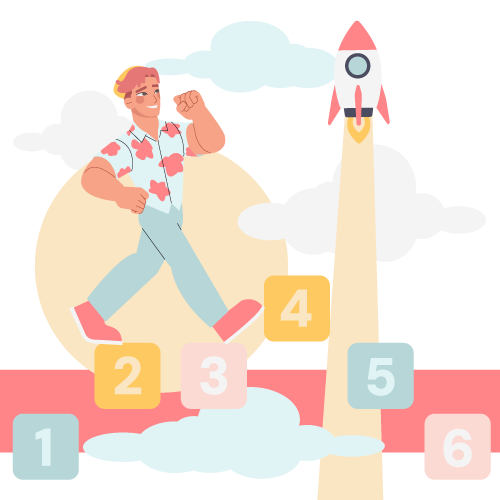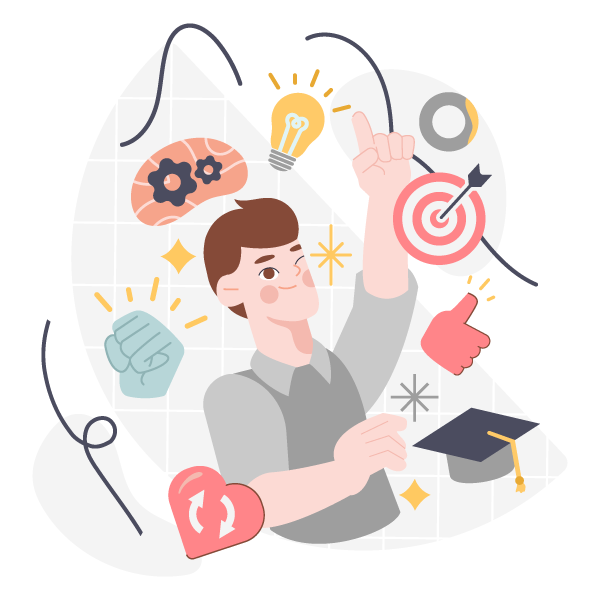Artificial intelligence (AI) is enabling companies to deliver scalable and more personalized training solutions. That’s the most effective strategy to meet shifting workforce needs in a fast-paced, highly digital world.
Personalized learning isn’t new to corporate training. But AI in corporate training goes beyond the pre-AI era’s level of personalization, offering learning experiences that are customized with greater accuracy. And that’s huge.
So, if you haven’t been delivering personalized training at your company yet, implementing corporate training using AI will take your learning and development (L&D) strategy to a whole new level. And if you’ve been offering personalized learning experiences to your learners, corporate training AI will enable you to make those experiences even more personalized.
This article explores what AI in corporate training truly means, its top use cases, why organizations are investing in it, the role of instructional design in this panorama, and why now’s the time to modernize your training approach.
What Is AI in Corporate Training?
AI in corporate training is the use of artificial intelligence to improve training programs within companies.
Those improvements can go from personalized learning paths and intelligent content recommendations to skill gap analysis and predictive upskilling. Even automated administrative tasks and virtual mentoring are included in the best AI solutions for corporate training.
They deliver personalized learning on steroids, as they adapt not only to the learner’s performance in real-time but also to their individual needs and learning styles.
Corporate training AI adjusts the difficulty level and content of a course to the learner’s progress. It predicts which learners need to upskill or fill skill gaps. It recommends the most adequate training materials to the learner at the right time. And it offers chatbots that give immediate answers to learners and support them throughout the learning experience.
Top Use Cases for AI in Corporate Training
You can use corporate training AI across many industries. But it ultimately comes down to leveraging its capability to gather data and personalize training for each individual. On top of that, the technology aligns learning experiences with business goals and supports learners throughout these experiences.
1. Personalized Learning Paths
When you combine adaptive learning with customized learning, you get personalized learning.
That’s the kind of learning that delivers experiences adapted to the learner’s progress and customized to their goals, skills, career path, and other variables.
But implementing corporate training using AI takes personalization one step further, enabling you to customize with greater accuracy. AI evaluates the learner’s profile, including individual interests, performance data, and learning preferences, to design learning experiences that match those criteria precisely.
2. Intelligent Content Recommendations
AI in corporate training analyzes the learner’s performance, career goals, job requirements, employee performance, and the type of content they engage with more frequently to suggest training modules and supplemental learning resources, such as eBooks, articles, podcast episodes, or checklists.
And if you’ve been delivering off-the-shelf eLearning courses to your workforce, don’t worry because AI can choose modules from those courses, too, to put together customized training programs.
Smartly recommended content is significantly more engaging and effective than one-size-fits-all solutions, enabling companies, for instance, to develop employees for newly launched technologies or regulations in a timely fashion.
Another example of smart content recommendations is adjusting the content’s difficulty level according to the learner’s progress, which AI tracks in real-time.
3. Automated Administrative Tasks
Corporate training AI alleviates the administrative burden of L&D. We’re talking about tracking each learner’s progress and results per course, enrolling employees in training programs, assigning them learning activities, and reporting on their activity and performance.
So, instead of doing all this manually, you can implement a learning management system with AI capabilities that does all the boring work for you in an automated way—while you focus on the fun part of your job, which is strategy.
It’ll generate attendance reports, assessment score reports, and course completion rate reports on your behalf, so you can understand whether staff didn’t engage with your courses or failed to pass them.
4. Skill Gap Analysis and Predictive Upskilling
AI in corporate training offers data-driven insights—through learning analytics—to help you make L&D decisions that fulfill learners’ needs.
It identifies skill gaps across your workforce and recommends training programs to fill those gaps before they become a business hazard. It’s a more efficient, scalable way to make training programs more relevant and achieve business goals.
Corporate training AI analyzes learner results. But AI also anticipates future skill needs by comparing employee performance review results with industry trends, emerging technologies, upcoming regulations, or the economic landscape.
By targeting specific skill gaps, staff can upskill more effectively in alignment with what your company needs to remain competitive.
For instance, AI predicts leadership gaps and pinpoints employees with particular leadership skill gaps, such as decision-making, effective communication, or conflict resolution. Then, it recommends that those employees take specific courses and that training managers adjust existing programs or develop new ones.
5. Virtual Mentoring
AI teaching assistants offer real-time support to learners—any time of the day, every day.
They answer questions, clarify doubts, and help navigate training resources. And this makes learning easier and more effective, learners more engaged, instructors less burdened, and training managers happier with the outcomes.
Why Enterprises Are Investing in AI-Powered L&D
AI in corporate training turns learning experiences more customized to each learner. But it also enables your business to go global and educate employees—as many as you wish—around the world.
And as if that weren’t great enough, the best AI solutions for corporate training give you evidence to prove that they’ve worked and brought concrete results to the business.
Increases Course Completion
Corporate training AI makes it easier to design personalized learning experiences. And research shows that learners who receive personalized recommendations about courses to take and learning materials to explore are 30% more likely to complete training.
The technology analyzes learning behavior on online education platforms, such as learning duration, frequency of course visits, and completion of learning activities. And as a result, learners engage in learning experiences and complete courses more often.
Scales Seamlessly
AI in corporate training allows companies to deliver high-quality training programs globally without incurring significant L&D costs. And AI teaching assistants are greatly responsible for that.
You see, when employees study at their convenience, whether that means studying at a coffee shop or after dinner, questions pop up when an instructor isn’t in the room or it’s too late in the day.
And in those circumstances, an AI teaching assistant comes in very handy, as they are available 24/7 to answer learners’ questions and help with navigating training resources.
That way, you reach more learners and employees in various geographical locations at a fraction of the cost of having human instructors do it.
Drives Measurable Outcomes
Learning analytics helps you show the impact of your training programs on the business. Because at the end of the day, the programs with the greatest business impact are the most effective ones.
For instance, implementing corporate training using AI makes it possible to measure the impact of a program on employee performance, customer service, or time to market.
The Role of Instructional Design in AI-Driven Training
No matter how much AI is a reality, human-led instructional design for corporate training remains crucial. Because AI may customize learning experiences, make them scalable, and put together the data that proves that they’re effective, but someone must still
- Define learning outcomes that align with business goals and learning needs
- Verify that the training content fits the organizational culture and is accurate from a subject matter point of view
- Decide how lessons are structured and how learners will interact with them
- Make sure that all training resources follow accessibility standards and legislation
This is what learning experience designers (LXDs) do in collaboration with scriptwriters, subject matter experts, animators, voiceover artists, and other L&D professionals.
They’re the ones who assert the quality of your training programs and advise you on what to do with those programs.
Don’t Wait to Modernize Your Training Strategy
More than innovation, AI belongs in the evolution of corporate training. And the companies that postpone modernizing their L&D strategies risk losing business to their competitors, who are designing highly customized, scalable, and data-driven learning ecosystems.
But not all corporate training AI is the same. It’s up to you to compare the best AI solutions for corporate training against each other and prioritize the partners with
- Extensive instructional design expertise
- Customizable solutions that you can scale as needed
- Learning analytics that track the most relevant KPIs
- Solutions that integrate with your existing systems
By blending the capabilities of AI in corporate training with human-led instructional design, organizations improve the way their teams learn, how their employees develop, and contribute to achieving business goals.
Let’s build an AI strategy for your L&D team! We help companies like yours implement corporate training AI that works—with measurable outcomes and continued support. Contact us to get started.






